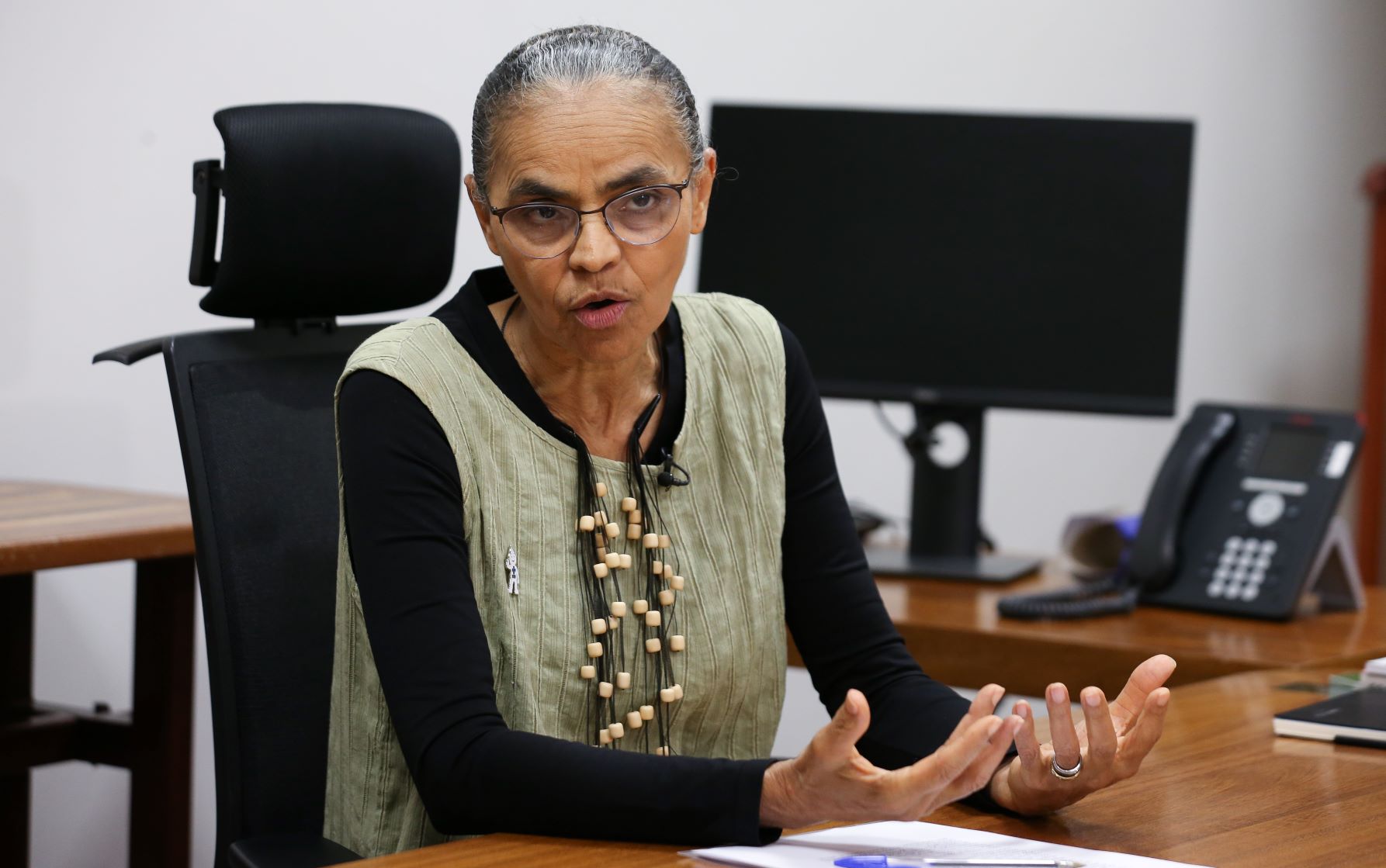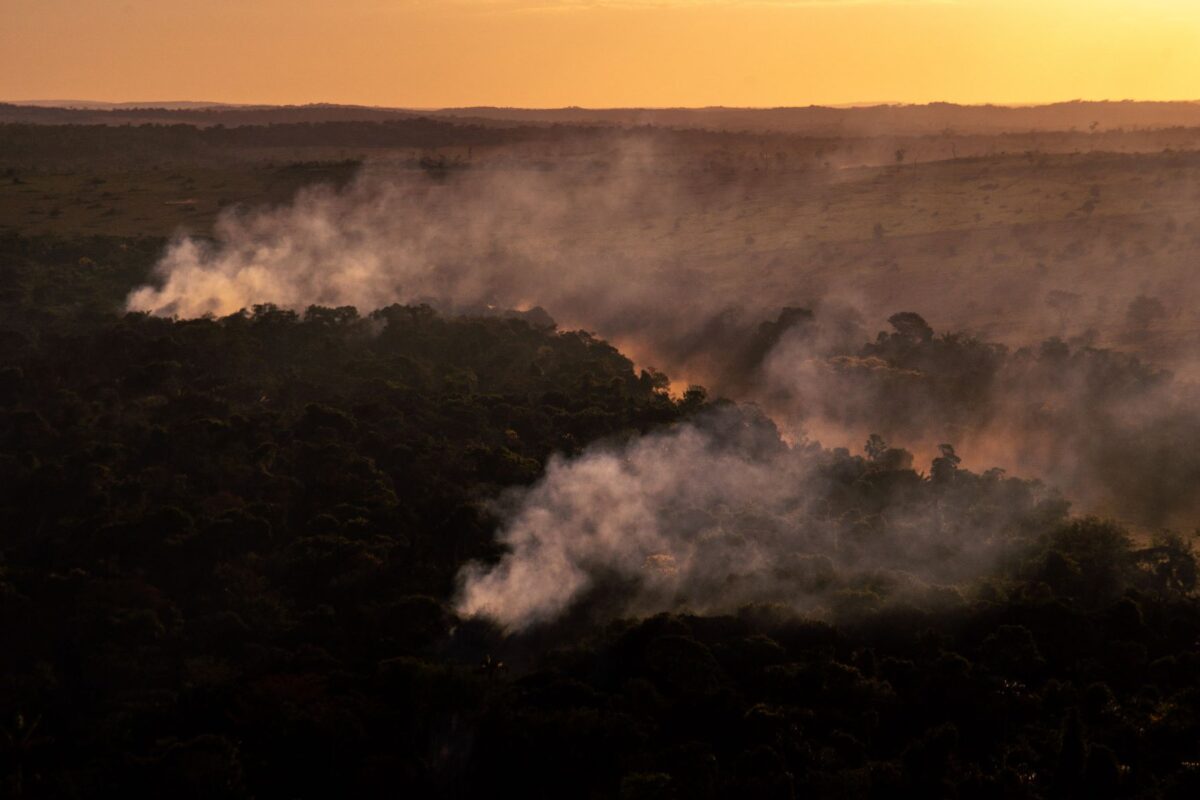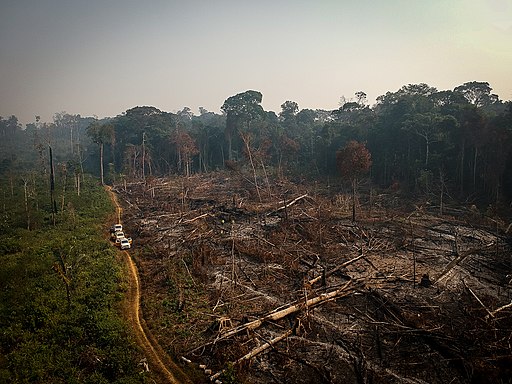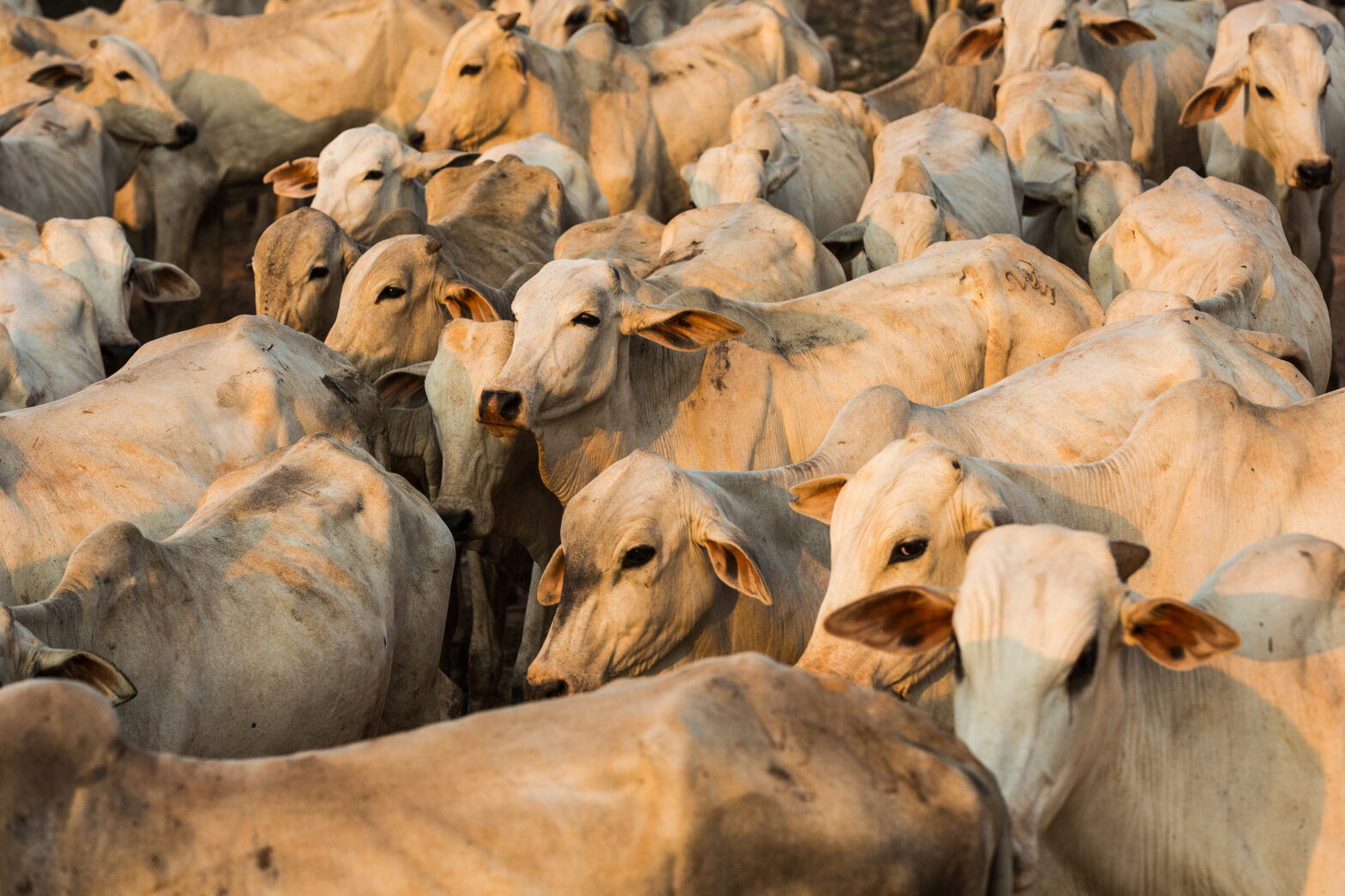The 5th phase of the PPCDAm, a plan first launched in 2004, presents four axes for containing advancing deforestation from 2023 to 2027. The project will depend on 13 ministries for its execution and will serve as the base for achieving the goal of zero deforestation in the Amazon by 2030.
The new Action Plan for Deforestation Prevention and Control in the Legal Amazon, AKA the PPCDAm, was announced on Monday (10) marking the first 100 days of management under Brazil’s new administration. Its updated features include a focus on intelligence to assist in remote tracking and repression of environmental crimes and their production chains, investment in the bioeconomy and territorial planning of undesignated public forests, critical deforestation areas.
In his third term, President Lula (PT) has the goal of achieving zero deforestation by 2030 and, as such, this plan is fundamental. Between 2004 and 2012, the PPCDAm was responsible for the historic 83% decrease in deforestation in the region during its first three phases. The draft version is in public consultation and open to suggestions from all of civil society, researchers and non-governmental organizations for a period of 15 days (until April 25).

Four main axises
The new PPCDAm anticipates actions in four axes: sustainable productive activities, environmental monitoring and control, territorial and land planning and normative and economic instruments. There are 12 general objectives and 36 expected results, broken down into 176 lines of action.
In the original plan from 2004, the actions were distributed among 17 ministries. The new PPCDAm now anticipates actions by 13 federal cabinets led by the Ministry of the Environment and Climate Change (MMA), currently headed by Marina Silva, just as it was at that time. Above the MMA is the Civil Cabinet, which coordinates activities through the Permanent Interministerial Commission for the Prevention and Control of Deforestation.
The structure was instituted along with the “environmental revocation” issued by the new administration on January 1st, which, at once, reactivated the Amazon Fund, the PPCDAm itself and the PPCerrado, the National Environment Fund (FNMA), annulling the decree in favor of mining in public and protected areas, reorganizing the process for environmental fines and sanctions and reinstating the National Council of the Environment (Conama).
In an interview with InfoAmazonia, João Paulo Capobianco, executive secretary of the MMA, the number two position at the ministry, pointed out the strengths of the new version from the government’s point of view: axes 1 (sustainable productive activities) and 4 (normative and economic instruments).
“These two axes hold a lot of weight in the plan, in supporting and accelerating this transition in model,” he said. “The inspection and control axis (2) is essential, of course, and it’s already being implemented. The most recent numbers from Ibama of increased inspections, seizures and embargoes are high and they are taking place, such as the removal of intruders in the Yanomami Indigenous Territory in Roraima – which is happening with support from the reactivated Amazon Fund. In other words, [the reactivation] was already moving at full speed and now we’re optimizing the plan, expanding the integration of the government.”
Capobianco also highlighted the importance of the allocation of Undesignated Public Forests (FPND), stipulated in axis 3 of the new plan for land and territorial planning: “It will bring enormous institutional stability to the region, because we are going to eliminate the option, shall we say, that land grabbers have to occupy undesignated areas and then attempt to formalize this occupation. By designating these areas, we prevent this from happening and we will certainly greatly reduce the scourge of land grabbing."
The executive secretary points out just one similarity to the 2004 plan: “I would say that the only way the new PPCDAm resembles the 2004 plan is the political will to end deforestation. We had it that year and we have it now, but the plan itself has many more instruments, a greater capacity for action, and this is reflected in the proposed actions in the plan.”
1st challenge: Containing deforestation
“The Lula administration inherited an Amazon with uncontrolled deforestation. And having high rates of deforestation is one thing, but having high rates of uncontrolled, accelerated deforestation is quite another," says Capobianco, referring to the statistics from recent years released by the National Institute for Space Research (INPE).
In 2021, deforestation in the Amazon reached the worst levels since 2006: There were 13,038 km² of cleared forest, according to the Prodes, the annual monitoring report from the INPE. In 2022, after four consecutive years of increases, there was an 11% drop in the annual deforestation, but it was still the second highest rate in 14 years: 11,568 km², equivalent to the area of Jamaica.
Based on Prodes's annual rates alone, the deforestation scenario was already urgent back in 2018. The clearing of the forest, which began to curve upward in 2012, accelerated at the beginning of the Bolsonaro administration, and the deforestation rate remained above 10,000 km² in each of the four years of his term, accumulating almost 60% more than the previous administration.
As such, even with the reestablishment of the PPCDAm, the Lula government still has to cope with the challenges inherited from the Bolsonaro administration. One of the main ones is the Prodes annual monitoring of 2023, which conducts its official count from the months of August to July, and will still include the balance of deforestation from the last five months of the previous administration, which, as is already known, was at record levels.
As InfoAmazonia showed in January, not only were the deforestation alerts from Deter/Inpe in 2022 the highest since recording-keeping began, they were also 25% higher than the average for a 12-month period. In this new scenario, Amazonas, previously one of the best preserved Brazilian states, has become the state with the second highest loss of forest in the Legal Amazon.
Also according to Deter, which issues daily deforestation alerts, in the first quarter of this year, the system registered deforestation alerts for 844.69 km². It is the second worst first quarter, behind only the 2022 rate (941.34 km²) since the beginning of the Deter/Inpe historical series in August 2015.
DEFORESTED AREA FROM JANUARY TO MARCH (FIRST QUARTER)
Numbers from Deter, the INPE system of daily alerts:
2023: 844.69 km²
2022: 941.34 km²
2021: 573.29 km²
2020: 796.95 km²
2019: 525.69 km²
2018: 685.48 km²
2017: 233.64 km²
2016: 643.83 km²
Actions executed simultaneously
“There is an urgent need to stop this bleeding, to stop the deforestation, to reduce it drastically to make the environment favorable for us to go in with alternatives, solutions for the population there. In other words, we have to shut the door on illegality, and open the door on legality, either by offering alternatives, or by presenting and offering economic instruments to foster this transition,” Capobianco said. “This has led the 2023 plan to have a very strong focus on these axes of sustainable economic alternatives and economic instruments for the transition from the predatory economy to the sustainable economy,” he adds.
There is an urgent need to stop this bleeding, to stop the deforestation, to reduce it drastically to make the environment favorable for us to go in with alternatives, solutions for the population there. In other words, we have to shut the door on illegality, and open the door on legality, either by offering alternatives, or by presenting and offering economic instruments to foster this transition.
João Paulo Capobianco, executive secretary of the MMA
According to the executive secretary of the MMA, the actions of the new plan's four axes will be executed simultaneously. The most urgent challenge is to contain the high rate of deforestation, but this is not so simple and results might still take some time to appear:
“It's not going to happen overnight because there has been a push, so we aren't going to be able to reduce that curve right away,” he explained. “If we're able to have good coordination and there are reasons to believe that this is feasible, we are going to make these changes faster than normal, by simply analyzing historical trends in deforestation. I would say this: We are making every effort to reduce deforestation immediately. Now, this will take on momentum if the states, parliamentarians, public figures in general in the Amazon also participate in this process.”
The strengths of the 5th phase
To help survey the main highlights of the new plan, InfoAmazonia interviewed three environmental researchers who have been following the subject for years: Carlos Rittl from Rainforest Norway, Gabriela Savian, director of the Public Policy Center at the Institute of Environmental Research of the Amazon (IPAM) and Paulo Barreto from the Institute of the Man and Environment of the Amazon (Imazon).
“The reactivation of the state plans is very important,” said Gabriela Savian of IPAM, who sees an important front of coordination in the states' joint participation, with planned actions in axes 1 and 2.
“Through this plan, the MMA has the possibility of achieving a single coordination, which is a key point for us to also manage to reduce deforestation via command and control, via territorial planning, and, what we most hope for: building a path to low-emission economic development.”
In March, Savian told InfoAmazonia that the focus on the economic aspect is the secret to the new version of the plan. “Up until it was 'frozen,' the PPCDAm as a whole yielded better results in the area of territorial planning and command and control, which is what reduces deforestation fastest. The greatest challenge is that we did not succeed in implementing the part of sustainable production and economic incentives,” he said of that time.
Meanwhile, Paulo Barreto from Imazon highlighted the new PPCDam's clear support for the bioeconomy, a point present in axis 1, as one of the strengths. “This keyword, bioeconomy, now appears as a point that the government wants to deal with head-on,” Barreto said. “In general, the structure of the new plan is similar to what we had in the past, but now there are more details and activities that should be done on the items.”
Capobianco also highlights the importance of these instruments for economic and sustainable development going beyond just “stopping the bleeding” of deforestation, and as tools for moving toward extinguishing the problem.
“We now have the opportunity to make further advances, much further I'd say, and the PPCDAm brings this, in the axis of sustainable economic alternatives and economic norms and instruments,” said the executive secretary. “We have made significant progress since 2004, not only in Brazil, but all over the world. We had the whole emergency of carbon credits, the whole issue of REDD+, which did not exist, the Amazon Fund, payment for environmental services, the bioeconomy.
In other words, there is a series of instruments, as well as economic objectives and strategies, so to speak, that will allow what we call the transition of the Amazon's economy in a much more consistent manner.”
Technologies to anticipate the problem
In Axis 2, Barreto also pointed to the attempt to improve the ability to predict forest degradation and survey its production chains as a new feature, with the signaling of a possible new system that predicts deforestation. “In other words, the government would have a system that helps identify probabilities of deforestation the following year based on risk factors such as history of deforestation, the same way Imazon has PrevisIA.”
Carlos Rittl, of the Rainforest Foundation of Norway, also highlighted Axis 2's use of more intelligence mechanisms to track the chain of destruction as one of its strengths.
“The new version of PPCDAm is robust and has a lot focused on the use of intelligence bases to adopt measures to combat deforestation remotely. [The plan] has a lot to improve data structures and the connection between different systems so that it is possible to assess illegality more quickly, with tracing of wood and Documents of Forest Origin (DFOs), CNPJ checks, authorization… This is very interesting and it has many references to combatting these irregularities and issues related to fraud and corruption,” said Rittl. “With an intelligent assessment of possible irregularities, when the inspectors go into the field, there is a much higher probability that they conduct inspections with the CPF or CNPJ of the people who need to be charged,” he added.
Rittl also recalled that part of this present reality is only possible thanks to the advances achieved in the implementation of the PPCDAm in 2004, from which the Deter/INPE system was created in 2006, the Amazon Fund was created in 2008, which strengthened Ibama, the allocation of new conservation units (CUs) - 40 were created on 26 million hectares - and the foundation of ICMBio in 2007, in addition to demarcations of more indigenous lands (ITs), such as the emblematic Raposa Serra do Sol, approved in a contiguous area of Roraima in 2009, and the development of the Rural Environmental Registry (CAR) in 2012.
There is also a normative part provided for in axis 4. According to Capobianco, various regulations discussed in recent years will be introduced: a carbon market, payment for environmental services and effective implementation of all the measures of the Forest Code, among others.
“For example, provisional measure 1151/2022, which deals with forest concessions, which opens some perspectives, was adjusted in accordance with the government and it has the possibility of stimulating the expansion of concessions. This is desirable for everyone, since the more we can use timber and especially non-timber resources, the more options we have for forest regeneration through concessions, which is another one of our priorities,” explained the MMA executive secretary.
Mining and undesignated public forests
Paulo Barreto also highlighted, in axis 2, the unprecedented focus on combating mining - which quadrupled in the Amazon between 2010 and 2020, according to the MapBiomas network - and targeting the funders of this and other illegal activities:
“There's a lot of good in the new PPCDAm, moves in the right direction, but there is a lot that has a certain complexity, which also depends on other ministries,” said the Imazon researcher, adding that the impacts in terms of reducing deforestation may only become apparent in 2024.
There's a lot of good in the new PPCDAm, moves in the right direction, but there is a lot that has a certain complexity, which also depends on other ministries.
Paulo Barreto, Imazon researcher
“In 2023, deforestation is much more widespread than in the past, and criminals are confident in their impunity. The government has to follow the money. Who buys the illegally extracted gold? Who buys the cattle from the ranching operations that cause deforestation? That's where we need to go,” Barreto said.
According to him, it is essential to attack the financial power of those who invest and profit from the destruction of the forest. “The meat processing companies play a key role, and the government has shares in the biggest company, JBS. The BNDES holds 20% of JBS's shares. From 2012 and 2022, they made R$16 billion in profits from investments in the meat processing industry in Brazil. In other words, the authorities are profiting from deforestation by making this investment and not having a de facto, effective and strong policy there to remove deforestation from this chain,” he said.
In 2023, deforestation is much more widespread than in the past, and criminals are confident in their impunity. The government has to follow the money. Who buys the illegally extracted gold? Who buys the cattle from the ranching operations that cause deforestation? That's where we need to go.
Paulo Barreto, Imazon researcher
Another strong point from axis 3 highlighted by Rittl is the designation of all public areas that have yet to be designated. Currently, there are about 51 million hectares (twice the area of Rio Grande do Sul) of public forests in this category, where deforestation is concentrated, along with settlements and private properties.
“With the entrance of the Lula administration, the return of the PPCDAm, this changes everything. It's like, ‘Let's get the vehicles, the helicopters and send in all the Ibama agents,' but in practice Ibama is still operating with a budget that was negotiated under the Bolsonaro administration,” Carlos Rittl recalls. “Even if the Lula government made changes to the environmental budget, they wouldn't even be able to recuperate what it had in 2018, before Bolsonaro came in.”
Diagnosis: the Amazon ‘in an unconstitutional state of affairs’
The new 92-page PPCDAm document also contains a diagnosis of the current state of the Amazon. The scenario includes everything from the abandonment of inspections to the drastic reduction in the number of employees in such agencies as Ibama and ICMBio, whose staff was cut by 25% between 2010 and 2016, in addition to the scarcity of resources and the advance of environmental crimes linked to organized crime in the region. The result was a return to the same rate of deforestation as in the early 2000s.
“While, in 2012, only 17% of the deforested area was in blocks larger than 100 hectares, in 2022, these large deforestations amount to 38% of the total area. When observing the distribution of large polygons (greater than 100 or even 1000 hectares), it appears that deforestation of this sort is concentrated in the southern region of the Amazon (especially in the municipalities of Apuí, Humaitá and Manicoré), in the central and northern area of Mato Grosso, heading to the south and toward central Pará, and a third area where the borders of the states of Acre, Amazonas and Rondônia converge,” the diagnosis reports, describing the new arc of deforestation: the region known as Amacro.
The increase in these polygons is directly linked to the “reduction of environmental inspection” and “expectation that illegal deforestation will be legalized” in recent years, according to the new plan. “The increase in inspection efforts by the agency between 2004 and 2009, measured by the embargoed area, the number of reports and operations, was followed by a strong reduction in deforestation rates in the Amazon. Similarly, the reduction of the area embargoed by Ibama after 2018 indicates that environmental inspection no longer had priority. ”
In April of 2022, Justice Cármen Lúcia of the Federal Supreme Court (STF) recognized the “unconstitutional state of affairs” in the Amazon in her vote as rapporteur of ADPF 760, which was part of the so-called “green package” and demanded the resumption of the then abandoned PPCDAm, or the development of an equivalent program. The expression characterizes when, due to omission on the part of the authorities, there is ample, widespread violation of fundamental and constitutional human rights, like the right to a balanced natural environment.
With her vote, the justice determined the development of a new anti-deforestation plan within 60 days, after having found that the reduction in inspections and environmental control, inertia and lack of political will and the lack of efficient environmental policy, including the abandonment of the PPCDAm, had resulted in an evident environmental regression and the risk of the Amazon reaching the tipping point due to the levels of deforestation. Almost a year later, in March, the new administration informed the Supreme Court of the reactivation of the PPCDAm, signaling a change in posture to achieve the “end of the Unconstitutional State of Things” in the Amazon.
Report by InfoAmazonia for the project PlenaMata.





